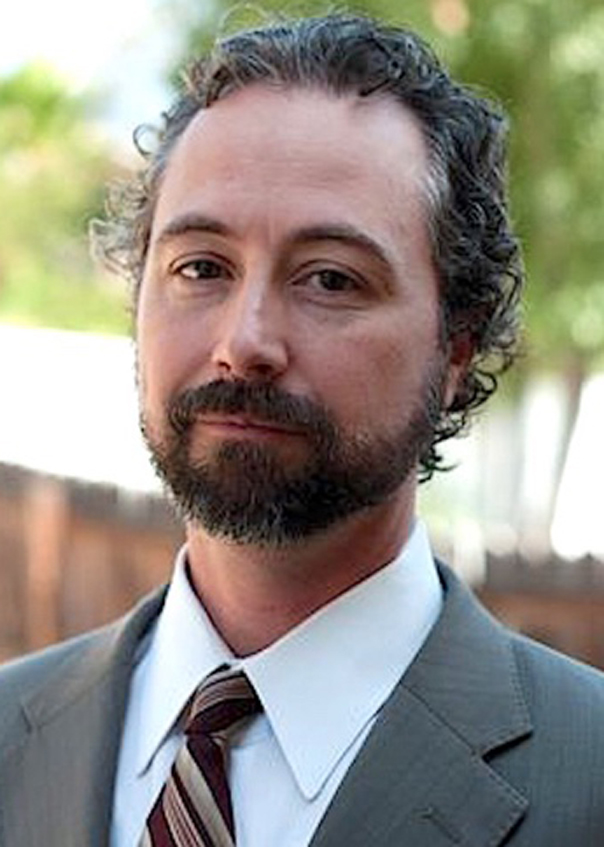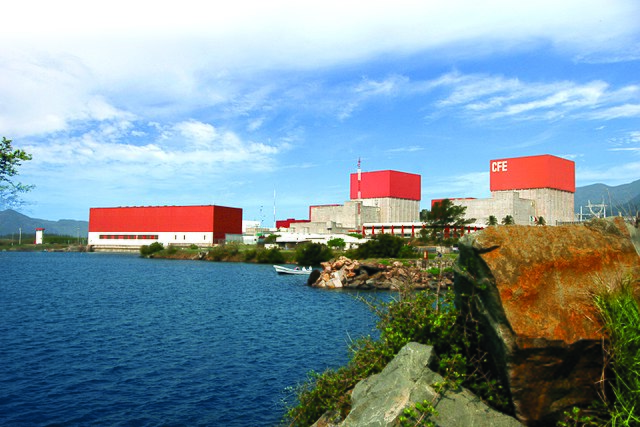Framatome’s GAIA Protect EATF assembly. (Photo: Framatome)
Framatome’s enhanced accident tolerant fuel assemblies recently completed a third 18-month fuel cycle at Southern Nuclear’s Vogtle-2 plant—the first of this type of fuel to reach this milestone in the U.S., the company said.
The project team included (from left to right) Jennifer Watkins, Seth Ashby, and Adrian Wagner. (Photo: INL)
Researchers at Idaho National Laboratory in early 2023 manufactured commercial-grade high-assay low-enriched uranium (HALEU) fuel pellets to the specifications of a General Electric accident tolerant fuel design, INL announced November 21. A team working at INL’s Experimental Fuels Facility at the Material and Fuels Complex fabricated about two dozen uranium dioxide pellets using HALEU enriched up to 15 percent U-235.
Marking the NRC’s acceptance of NuScale’s standard design approval application for formal review are, left to right, Getachew Tesfaye, NRC senior project manager; Robert Gamble, NuScale vice president of engineering; Brian Smith, NRC director of the Division of New and Renewed Licenses; Carrie Fosaaen, NuScale vice president of regulatory affairs; Karin Feldman, NuScale vice president of the program management office; Robert Taylor, NRC deputy office director for new reactors; and Mark Shaver, NuScale director of regulatory affairs. (Photo: NuScale)
The Nuclear Regulatory Commission has accepted for formal review NuScale Power’s standard design approval (SDA) application for its updated small modular reactor design, the Portland, Ore.–based firm announced yesterday.
The Monticello nuclear power plant. (Photo: NRC)
The Nuclear Regulatory Commission has accepted for review Northern States Power Company’s subsequent license renewal application for its Monticello nuclear power plant. A notice of the agency’s decision, along with information on requests for a hearing in the matter, was published in the March 3 Federal Register.
Browns Ferry: A breaker-to-breaker run. (Photo: NRC)
The Tennessee Valley Authority took Browns Ferry-2 off line February 17 for a refueling and maintenance outage, following a nearly two-year, breaker-to-breaker run—the first in the Alabama nuclear plant’s history.
According to the utility, the unit established a new record for itself with 665 days of continuous operation, producing more than 20 billion kilowatt-hours of electricity.
Xcel Energy’s Monticello plant.
Mexico's Laguna Verde nuclear power plant, on the coast of the Gulf of Mexico in the state of Veracruz.
An agreement between the United States and Mexico on civil nuclear cooperation has entered into force, the U.S. State Department announced last week. While first proposed in 2016 and finalized and signed in 2018, the pact only received approval from the Mexican Senate this March.
The Laguna Verde nuclear power plant. (Photo: HFStudio)
Unit 2 at Mexico’s Laguna Verde nuclear plant has been given the go-ahead to operate into the 2050s, plant owner and operator Comisión Federal de Electricidad (CFE) announced last week.
Mexico’s secretary of energy, Norma Rocío Nahle García, approved a 30-year extension to the unit’s operating license on August 25, following a review by the country’s National Commission for Nuclear Safety and Safeguards. The reactor, one of two at the plant, is now authorized to run until April 10, 2055.
An artist's rendering of the NuScale plant. (Image: NuScale Power)
The Nuclear Regulatory Commission has directed its staff to issue a final rule certifying NuScale Power’s small modular reactor design for use in the United States, the agency announced last Friday.
Certification of the Portland, Ore.–based SMR developer’s design will become effective 30 days after publication of the rule in the Federal Register. The design will be incorporated as Appendix G to 10 CFR Part 52, Licenses, Certifications, and Approvals for Nuclear Power Plants.
September 10, 2021, 8:22AMUpdated December 31, 2021, 7:15AMNuclear NewsThomas R. Wellock An aerial view of the Hanford reservation and Columbia River that shows the N (nearest), KE/KW (center), and B (top right) reactors. (Photo: U.S. DOE )
In March 1972, Stephen Hanauer, a technical advisor with the Atomic Energy Commission, met with Norman Rasmussen, a nuclear engineering professor at the Massachusetts Institute of Technology. The AEC had recruited Rasmussen to develop a report, The Reactor Safety Study (WASH-1400), to estimate the probabilities and consequences of a major nuclear power plant accident. With thousands of safety components in a modern reactor, the task was mind-boggling. Rasmussen proposed a novel approach based on more powerful computers, “fault tree” methodology, and an expanding body of operational data. By calculating and aggregating probabilities for innumerable failure chains of components, he believed he could develop a meaningful estimate of overall accident risk. WASH-1400 would be a first-of-its-kind probabilistic risk assessment (PRA).
Framatome’s PROtect accident tolerant fuel assembly undergoes final inspection before delivery to Exelon’s Calvert Cliffs-2 in Lusby, Md.
The nuclear industry’s first 100 percent accident tolerant fuel assembly is in operation at Exelon Generation’s Calvert Cliffs plant, the Department of Energy announced yesterday. The advanced fuel will operate in the reactor for the next four to six years and will be routinely inspected to monitor its performance, the DOE said.
Located in Lusby, Md., Calvert Cliffs houses two pressurized water reactors. Unit 1 is rated at 907 Mwe, and Unit 2 at 881 Mwe.






.jpg)






